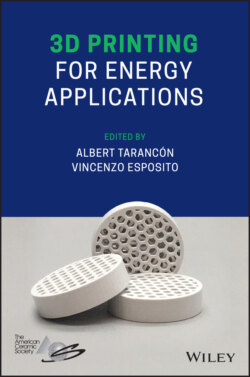Читать книгу 3D Printing for Energy Applications - Группа авторов - Страница 23
1.2 Powder Bed Fusion AM
ОглавлениеPowder bed fusion (PBF) refers to a class of AM processes. The most common machine tool for metal additive manufacturing is the PBF systems. This type of machine operates by selectively fusing powder following a layer‐by‐layer deposition principle. The powder is contained in a silo and fed to a re‐coater to evenly distributed powder between consolidation operations. The tool distributing the powder can be in the form of a scraper, a roller, or a blade that is designed to both fluidize and distribute the powder. As this tool has a major influence on the distribution of the layer, the powder and the tool have to be carefully matched to the application. Two kinds of PBF technologies are based on the laser (L‐PBF) and the electron‐beam (EB‐PBF) as the power source [21]. The L‐PBF process is more versatile since it can operate under a neutral gas atmosphere while EB‐PBF requires a vacuum. However, electron beams are faster and can be controlled efficiently through magnetic mirrors and hence offer certain advantages. The high‐density parts and small voxel size distinguish powder bed fusion from other metal AM processes for manufacturing functional components. In the past 20 years, PBF technologies (especially L‐PBF) have seen a rapid increase across various sectors, such as aerospace, biomedical, tooling, and energy sectors [3]. Several review articles discuss PBF process–structure–property relations and establish applications for Type‐I functional materials [22, 23]. A much smaller portion of the literature is focused on more complex functionally gradient metal PBF. Design of functionally gradient additive manufacturing (FGAM) components encompasses distributed site‐specific properties with gradual transitions in geometry, chemical compositions, constituents, or microstructures. A lack of guidelines on the selection and distribution of materials has hindered the development of FGAM, thereby limiting the microstructural design and arrangement of transition phases. Although some commercial software packages exist for FGM's and multi‐materials 3D printing, they are still far removed from real industrial applications and the ever‐increasing demands of novel functionally graded components. FGAM of PBF is a highly underexplored field for metals, especially in the material gradients domain. An overview of the literature on metal PBF functional components is presented in the following sections according to geometrical and material gradients.
